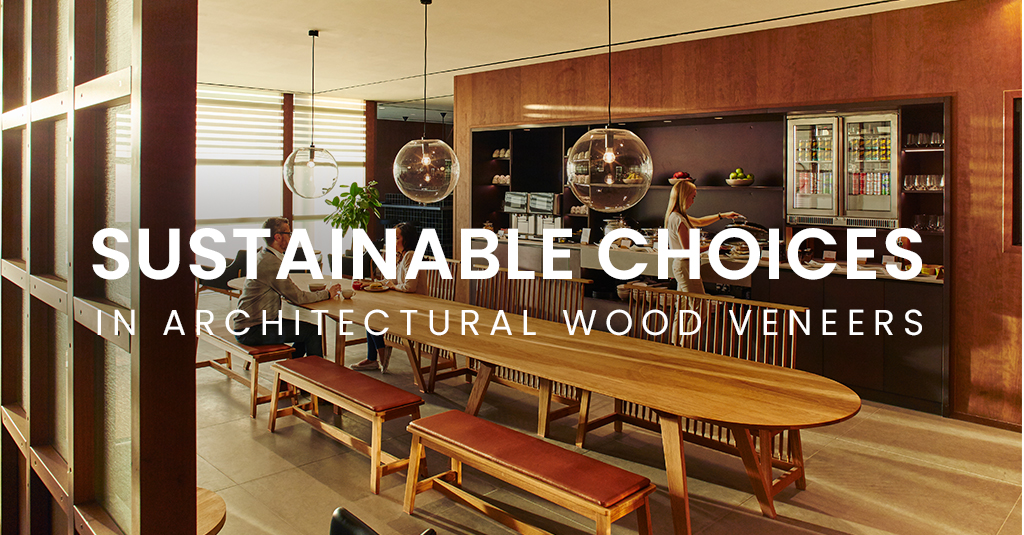
Everything we do can affect the environment in ways both positive and negative, and that includes building and design. Incorporating sustainability in architecture and design creates eco-friendly and aesthetic spaces. You can incorporate recycled, repurposed, or green building materials while reducing energy consumption and prioritizing occupant well-being to create a cohesive look and lasting impression.
The Environmental Benefits of Using Sustainable Wood Veneer
Veneer wallcoverings are made with wafer-thin slices of natural wood. These thin layers are then bonded to a substrate, and since they’re made with real wood, they look and feel like the species of wood from which they were cut. They retain the natural look and feel of the wood grain and can be stained, dyed, and finished to your specifications. Engineered wood can even improve access to rare and exotic woods.
Few materials are as sustainable as eco-friendly veneers. We can use timber more efficiently when crafting our veneers by cutting multiple veneer sheets from a single log. Jacaranda has patented a process that allows us to get three times as much SanFoot from every log, using wood from certified and responsibly managed forests. The higher yields translate to less waste while crafting reconstituted wood veneer lowers demand for rare and exotic species.
Compared to conventional lumber production, eco-friendly veneers are less energy-intensive and generate fewer greenhouse gases.
Wood Veneers and Eco-Friendly Alternatives
In architecture and design, you have many eco-friendly options, including:
- Post-consumer recycled materials: Steel, aluminum, and more are durable and recyclable throughout their lifespans.
- Glass: Glass is recyclable and easy to use in many applications, including doors and surfaces, and can be tempered for added strength.
- Natural fibers: Jute, sisal, rattan, and wicker are highly versatile and can be used in furnishings and various decorative elements.
- Composite materials: Often made using recycled wood fibers and other materials, MDF and HDF can be used in many decorative and architectural applications.
Although the various green building materials offer distinct benefits and drawbacks, few are as versatile as sustainable wood veneer. Wood veneer is strong, durable, and easy to incorporate into any aesthetic or environment. Like composite materials and natural fibers, it can be dyed or stained to match any space. Wood veneers can also be installed on any surface, like recycled metals, and can be bent or wrapped around corners and curved surfaces. It can even be translucent, much like frosted or tinted glass: Our TransTec is so thin that light passes right through it, making it an excellent option for backlighting and more.
Sustainability: Real Value for the Real World
A truly sustainable project is environmentally friendly, economically sound, and culturally appropriate. One example of this is the Starbucks Roastery in Tokyo. Located on the Imperial Palace grounds, the Tokyo Roastery was designed and built with sustainability in mind to support resource-positive goals. It incorporates features that help minimize its carbon footprint, reduce waste, use renewable energy, and use water wisely and is considered a “sustainability hub” to promote greener Starbucks locations throughout Japan and the world.
At Jacaranda, we’re proud to support sustainability goals with real wood veneer products that are not just beautiful but environmentally responsible. Contact us today to learn more or to schedule an appointment with our team.


